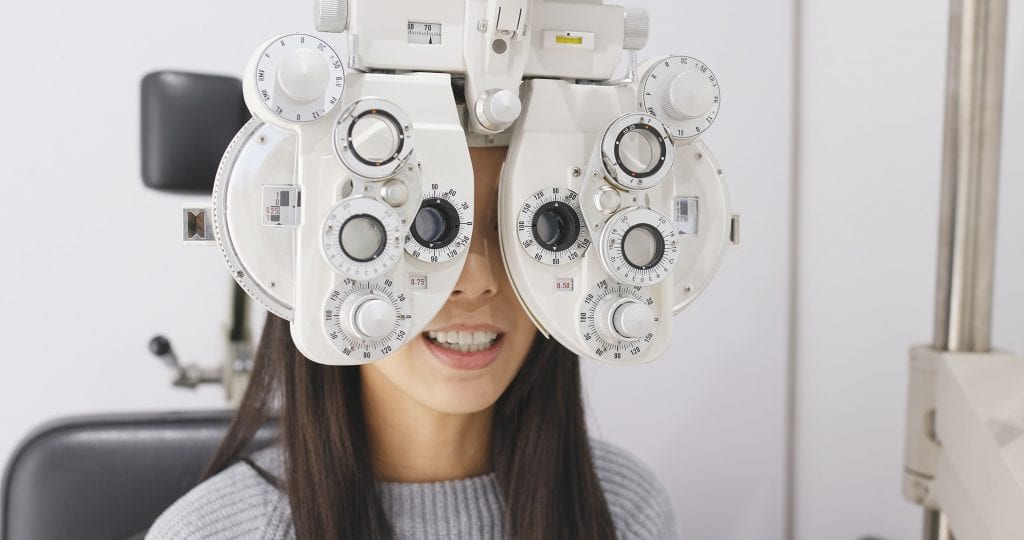SHOP DRY EYE CARE TODAY!
Use code VISIONARYEYE20 at checkout for 20% off!
Just like with the rest of your body, age can have drastic effects on your eyesight. One of the most common age-related eye conditions out there is cataracts. You may be asking yourself, “what are cataracts?” and you’re not alone. Though many people have heard of cataracts, they’re less informed about the types, symptoms, and treatment of them. Considering how common cataracts are, it’s likely that you or a loved one may be affected by the eye condition if you don’t take the proper precautions. Take a look below to learn all you need to know about cataracts and see what you can do to protect yourself from developing this condition.
 What Are Cataracts?
What Are Cataracts?Cataracts are described as clouding of a normally clear eye lens. They affect the natural lens of your eye which leads to impaired vision and other sight complications. Typically, cataracts affect older patients over the age of 60 and are most noticeable in dim lighting. Fortunately, cataracts do form slowly and can be treated.
Though the cause of cataracts has not yet been fully determined, it’s understood that they form when proteins build up in the lens, making it appear cloudy. The cloudiness prevents light from passing through the lens clearly resulting in vision impairment. There may be several causes of cataracts, but generally, age, exposure to sunlight, and eye trauma are the biggest contributors.
The main symptom of cataracts is the inability to see clearly. Cataracts cause light to be blocked by the natural lens impairing your vision. Other signs and symptoms of cataracts include:
There are several types of cataracts including cortical, posterior subcapsular, and nuclear sclerotic cataracts.
Nuclear sclerotic cataracts are the most common and it’s very typical for people to develop them in their late age. This type of cataract forms in the center of the lens also called the nucleus. You may notice your vision improve for a brief amount of time when developing nuclear sclerotic cataracts but these effects do not last. Over time, your lens will begin to harden and become yellow or brown in color. It makes seeing small details almost impossible, dulls colors, and may result in seeing halos forming around objects.
Cortical cataracts are common in diabetes patients. These cataracts develop opposite from the nucleus, starting at the outer layer of the eye rather than the center. As it progresses, it creates noticeable spokes that lead from the outside in. A unique symptom of this type of cataract is experiencing changes in both contrast and depth perception.
Posterior Subcapsular cataracts develop much quicker than other types of cataracts, typically over months rather than years. Posterior cataracts start at the back of the lens and are most common in diabetes patients or those with extreme nearsightedness. Steroid use can also increase the risk of developing posterior subcapsular cataracts. With posterior subcapsular cataracts, you will first notice changes in your night vision and may also notice more difficulty reading.

The good news is that cataracts are easily treatable by medical and eye professionals. If you catch the condition early enough, a stronger prescription lens can improve your vision for some time. Typically, increasing your light source will also help vision in patients with cataracts, so be sure to add light to your home and use your new prescription glasses or contact lenses.
If these no longer work for you, then cataract surgery is going to be necessary. Cataract surgery is the only way to remove the cataract and fully treat it. There are several kinds of operations for cataracts, but they all require your surgeon to take out the cloudy lens and replace it with an artificial one. The surgery usually takes about 15 to 20 minutes, and you don't need to stay overnight in a hospital. If you have cataracts in both eyes, your doctor will wait until your first eye heals before they perform surgery on the second. More than 95% of people who have this done say they can see better afterward.
While there is no surefire way to prevent the onset of cataracts, there are some precautions you can take to limit your risk of developing cataracts. With risk factors such as increasing age and previous trauma or injury, there’s little you can do to keep eye problems from worsening. However, other risk factors can affect this as well. Some of them include:
In order to prevent cataracts from forming, try making some life changes such as:
Cataracts are the leading cause of blindness worldwide, though in the United States access to cataract surgery is readily available, so most Americans, fortunately, do not need to live with vision impairment from cataracts for very long. Should your condition require more advanced medical care, we work with many of the area's best specialty surgeons to co-manage any problems you may develop.
If you’re struggling with complications caused by cataracts or are just starting to develop cataracts, contact the Visionary Eye Center today! Here, we strive for customized eye care solutions for our Reno-Sparks patients and are eager to help you gain back control of your vision.
 775.827.1100info@visionaryeyecenter.com8175 South Virginia Street Suite B-900
775.827.1100info@visionaryeyecenter.com8175 South Virginia Street Suite B-900